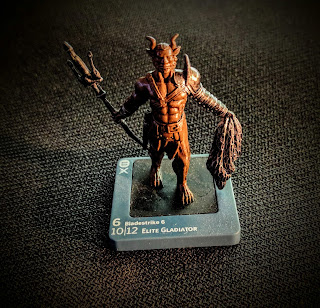Rules vs Realism
D&D does a pretty good job of applying a rule set to a fabricated
reality. Although the current system ignores much of the nitty gritty of
previous versions, it envelops most basic issues likely to arise. Now before I delve
any further, I would like to address the fact that I realise that 4e 3.5e and
pathfinder do cover a few of the topics I’m about to cover. The reason for this
post however isn’t about making new rules or showing where 5e is lacking. Its
more about incorporating a level of realism and logic that is missing in some
things.
Combat Clumsiness
Your paladin fighting with all his pack, bedroll, barrel, 4 warhammers, 3 chain mails and a dog still attached? He must be having a hard time keeping balance!Characters that don’t clearly state that they have, to the best of their ability, prepared for combat should be at some sort of disadvantage. This could be in the form of maybe a -2 to AC or at the least a hampered movement of some variety. This could be seen as nit picking but sometimes micro managing some aspects of the game creates a deeper involvement from players.
Flanking
Flanking makes sense, in most situations. The idea of someone
being surrounded by 3 or 4 enemies and is able to defend from all of them simultaneously
is ridiculous. It makes perfect and logical sense to give melee characters advantage when attacking from an enemy that is
already engaged. However, ranged units are still technically trying to hit a
moving target and therefore I believe shouldn’t receive the same bonus. But….
Still Targets (controversial I know)
I know that there is a rule for surprise attacks but, I think
at any point if anyone aims at a person who is not mobile or engaged in melee
combat, they could be given advantage. For example, a confident goblin sorcerer
stands arms behind his back on an outcrop 60ft away surveying his clan battle a
party of weary adventurers, should a ranged character quickly aim up and shoot
at him, why wouldn’t they deserve advantage. Technically it’s not a surprise round but, the fact that it’s a stationary target would be much easier to hit a moving
one. This should be taken as a case by case basis, but I believe in the right
situation it encourages your ranged characters to make more strategic decisions
and look further than the front row of fighting.
Pre-combat Preparation
You see a group of orcs running toward the party, who are
simply travelling between towns. The orcs are 120ft away (40yds or 36m… that’s such
a small distance to cover), should the party have 3 rounds of combat to start retaliating?
Or should they have 5 to 6 seconds to withdraw a weapon from a scabbard,
withdraw a bow, notch an arrow and raise it, drop the reins of the cart, don their
shield, form up or throw down their packs? The idea of feet as a measurement and
combat rounds of 6 seconds, can make starting these kinds of initiation
sequences clunky or unrealistic. I think providing each character like a 1-line
statement about their first action for this pre-combat preparation is a great way
to provide some flexibility and not dive straight into the rounds system of
combat.
For example, using the above situation: “I drop the reins to
the mule and leap from the cart, as I land I draw my mace and move to Rollo’s
side.” Or “I drop my pack from my pack, drawing back my cloak to withdraw my
sword. I step 10 feet forward, away from the horse and sink to a fighting
stance.” Finally, “I unsling my bow from my shoulders and drop my pack, I reach
down and grab an arrow from the quiver and notch it”.
I believe this speeds up encounters, as it potentially
removes 3 extra rounds of combat with multiple rolls and all that usually goes
with it.


Drop my pack (free) - Draw My shortsword (action) - Jump from my horse (1/2 movement) - take up a firing postion (rest of movement). Those things are all part of combat.
ReplyDeleteBasically, all combat means, is that you move from Narrative Time (where 5 minutes of talking can be hours of in game time) to Combat Time (where 10 minutes of real life time represents 6 seconds on in game time). Its like in an 8-bit RPG where you were exploring the map, then the screen flashes and you enter combat rounds.
There is a table that establishes "encounter distance". that is so you can easily decide when the screen flashes over and you zoom in on the action. I have run entire 4 hour sessions in "Combat Time" as the PCs explored a castle, and it works just fine. You should only do that when there are things to interact with in every area , but it keeps the game balanced and the players honest.